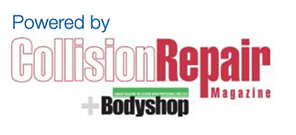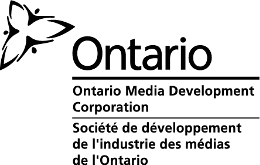Aftermarket Part
A part produced by an outside company for use in repair and replacement, rather than by the original manufacturer or for the original manufacturer of the vehicle.
Anti-Lock Braking System (ABS)
System that automatically controls wheel slip or prevents sustained wheel-locking on braking.
Auto Parts Store
Jobber and retail auto parts stores which primarily sell automotive products and conduct business at the retail level.
Base Coat / Clear Coat System
A paint system in which the colour effect is provided by a highly pigmented base coat. Gloss and durability are provided by a subsequent clear coat. Most vehicles are finished in this manner.
Betterment
The additional charge for a “repair” that improves the vehicle beyond its pre-accident condition. For example, a panel dented in a collision may have had significant rust issues before the collision. Replacing it completely would result in betterment, not just repair. Betterment can be charged as a percentage or a dollar value.
Big Three
Term oftne used to refer to the large US automakers: General Motors, Ford and Chrysler.
Body Filler
A paste-like material ordinarily mixed with a catalyst material used to fill large imperfections on a vehicle surface.
Body Shop
Service outlet specializing in vehicle body repair work.
Claim
Any request or demand for payment under the terms of the insurance policy to cover an incurred loss.
Degreasing
The removal from the vehicle’s sheet metal parts of contaminants that would otherwise create various paint failures.
Die
Solid or hollow form used for shaping materials by stamping, pressing, extruding, drawing or threading.
Door Rates
The hourly rate charged by repairers on standardized units of service work. Hourly rates may or may not correspond to an actual hour of work.
Estimate
The written estimate, made by an appraiser or estimator, upon inspection of a damaged vehicle, regarding the cost required to restore the vehicle to the condition it was in immediately prior to the loss. There are sometimes hidden damages that are not visible until the vehicle is disassembled. Additional repairs needed to complete the repair are documented in what is called a supplement. Insurance companies expect this to occur and have in place billing guidelines to handle this type of situation.
Final Bill
Itemized repair invoice detailing what repairs were actually performed (not just an estimate of repairs). Included in the itemized statement will be codes designating the type of parts used.
Frame
The square, rectangular, or tubular steel undercarriage that has the suspension, drive train, engine and body bolted to it.
Hit and Run
An accident caused by someone who does not stop to assist or provide information.
Independent Repair Shop
A repair facility not belonging to a network, automotive dealership, frnachise or larger organization.
Lease
Form of contract transferring the use of a vehicle in consideration of payment.
Lienholder
A person or organization, such as a bank or leasing company, with a financial interest in property up to the amount of money borrowed or still owed on the property.
Make
Brand name of a car or truck (ie. Chevrolet, Ford, Dodge, Hondam etc.).
Model Line
Group of motor vehicles having the same platform or model name.
Model Name
Word, group of words, letter, number or similar designation assigned to a motor vehicle by a marketing division of a motor vehicle manufacturer
No-Fault Insurance
A type of insurance policy where each person’s respective insurance company will handle their claims, regardless of who is at fault for a collision.
Non-OEM Parts
See Aftermarket Parts.
Off-Highway Vehicle
Vehicle intended for operation on unmade surfaces or rough terrain (i.e. for construction or agriculture).
On Board Diagnostics (OBD)
A unit that monitors the Electric Control Unit and system responses for errors during vehicle operations. When the vehicle is serviced, this information be downloaded and displayed to the service personnel which will facilitate the troubleshooting process.
Original Equipment Manufacturer (OEM) Parts / Original Equipment (OE) Parts
Referred to as Original Equipment Manufacturer collision replacement parts, Original Equipment collision parts, or simply OE parts, these parts are designed by your vehicle manufacturer and are produced to the same specifications and tolerances as the parts on the vehicle when it was manufactured. These parts meet stringent requirements for fit, finish, structural integrity, corrosion protection and dent resistance.
Paint Failure: Chalking
This type of paint failure is typified by a white material coming through the painted surface.
Paint Failure: Cracking
This type of paint failure is typified by cracks in the painted surface, not unlike the cracks seen at the bottom of a dried mud puddle.
Paint Failure: Fading
This type of paint failure is characterized by severe fade, and can occur in any colour but is more pronounced in reds, where the colour may fade from red to pink or red to orange.
Paint Failure: Fish-Eye
This type of paint failure is indicated by a spot in the paint in the repaired area that resembles a fish eye. This is caused by contaminants on the vehicle’s surface.
Paint Failure: Hazing
This type of paint failure occurs when a haze or fog-like substance surrounds a repaired area.
Paint Failure: Peeling
This type of paint failure is typified by paint peeling off the surface of the vehicle, indicating a sever loss of adhesion. This could be caused by any number of problems, not the least of which is improper preparation of the surface to be painted, or a mismatch of paint and primer.
Platform
Primary load-bearing structural assembly of a motor vehicle determining its basic size, and is the structural base that supports the drive line and links the suspension components of the motor vehicle.
Pneumatic Tire
Flexible, hollow rubber forming the outer part of the vehicle wheel and inflated by air pressure.
Pre-Loss Condition
Overall condition of vehicle immediately preceding collision, vandalism or theft.
Premium
The amount paid by an insured to an insurance company to obtain or maintain an insurance policy.
Primary Use
What your vehicle is mainly used for—pleasure, to and from work, business, commercial, or farm.
Refit
Replacing the undamaged parts that were removed during the repair. These parts were usually removed to prevent damage to them or paint overspray.
Registration
Motor vehicle ownership that is filed with the province/state.
R&R
Remove and replace. To remove old components and replace with different ones.
SAE
Society of Automotive Engineers.
Salvage Parts
Refers to parts salvaged from a vehicle, often from one that was deemed a total loss. In some cases, the part could be a salvaged aftermarket part. This category commonly includes large body assemblies, such as complete bumper assemblies, doors or complete front ends, that have been removed from the original vehicle.
Specialty Repair Shop
Retail outlet which offers specialized vehicle products and service.
Tooling
Set of required standard or special tools needed to produce a particular part; includes jigs, fixtures, gages and cutting tools, but excluding machined tools.
Unibody
A type of body construction that doesn’t require a separate frame to provide structural support for the vehicle’s mechanical components. Also called “unitized” or “monocoque.”
Vehicle Identification Number (VIN)
Number assigned to a vehicle by the manufacturer primarily for registration and identification purposes (consisting of numerals and letters).


